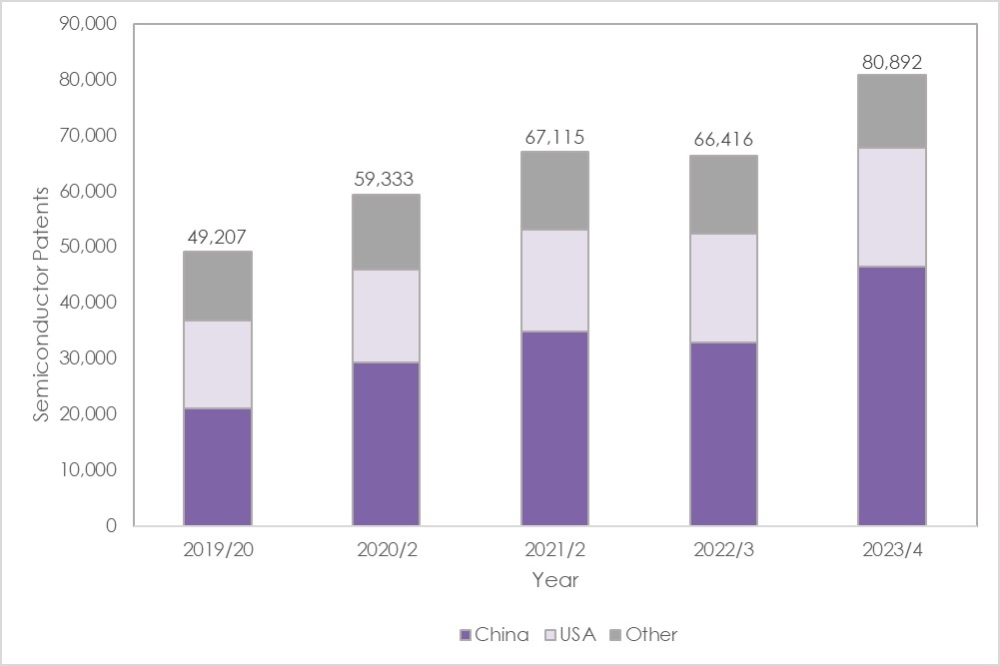Semiconductor patent applications up 22% globally to 81,000 a year

AI demand helping drive semiconductor innovations. Sharp rise in patents filed in China as industry responds to US export controls on semiconductors. Suggests industry sees China a continued key market.
There has been a 22% increase in global semiconductor patents filed, rising from 66,416 in 2022/3* to 80,892 in 2023/4 (year-end March 31), shows new research by Mathys & Squire, the leading intellectual property law firm.
Dr Edd Cavanna, partner at Mathys & Squire, says the rise in new inventions in the sector is partly being driven by the boom in the AI sector which has dramatically increased the market cap of chip companies such as Taiwan Semiconductor Manufacturing.
Dr Cavanna says: “Gen-AI is the most recent technology that is spurring R&D in the semiconductor industry and leading to an associated rise in patent applications.”
Chinese patents up 42% as domestic industry responds to US export restrictions of some semiconductors
Global semiconductor patent applications filed in China have risen 42% to 46,591 in 2023/4, up from 32,840 the year before.
The sharp uptick in Chinese applications is in keeping with a general trend recently of strong growth and large filing numbers. In contrast, new US patent application filings have remained reasonably steady over the past few years.
Dr Cavanna says: “This is likely an indication that the rivalry between US and China in the semiconductor patent space is heating up.”
Export restrictions on some semiconductors from the US to China and concerns that more export restrictions could be announced in the future may have encouraged more investment and R&D from the Chinese semiconductor industry.
The Chinese government has previously called for China to ‘step up’ progress in the innovation of key technologies, including semiconductors as well as AI research which depends heavily on semiconductor technology.
Dr Cavanna says: “The massive rise in semiconductor patent applications in China also shows a vote of confidence amongst the semiconductor industry in China as a market for semiconductors.”
In the US the Inflation Reduction Act (IRA) may also have helped trigger more R&D in the sector. The IRA provides substantial financial incentives, running into billions of dollars in subsidies, to chip manufacturers to manufacture more semiconductors in the US. That funding may be helping more R&D in the sector. Semiconductor patents in the US have risen 9% to 21,269 in 2023/4.
Export restrictions have also led to an increase in chip manufacturing from foreign firms in the US. For example Taiwan Semiconductor Manufacturing Co, one of the largest manufacturer of chips, has undertaken an unprecedented investment in constructing an Arizona plant that reportedly rivals the productivity of its plants in Taiwan.

































